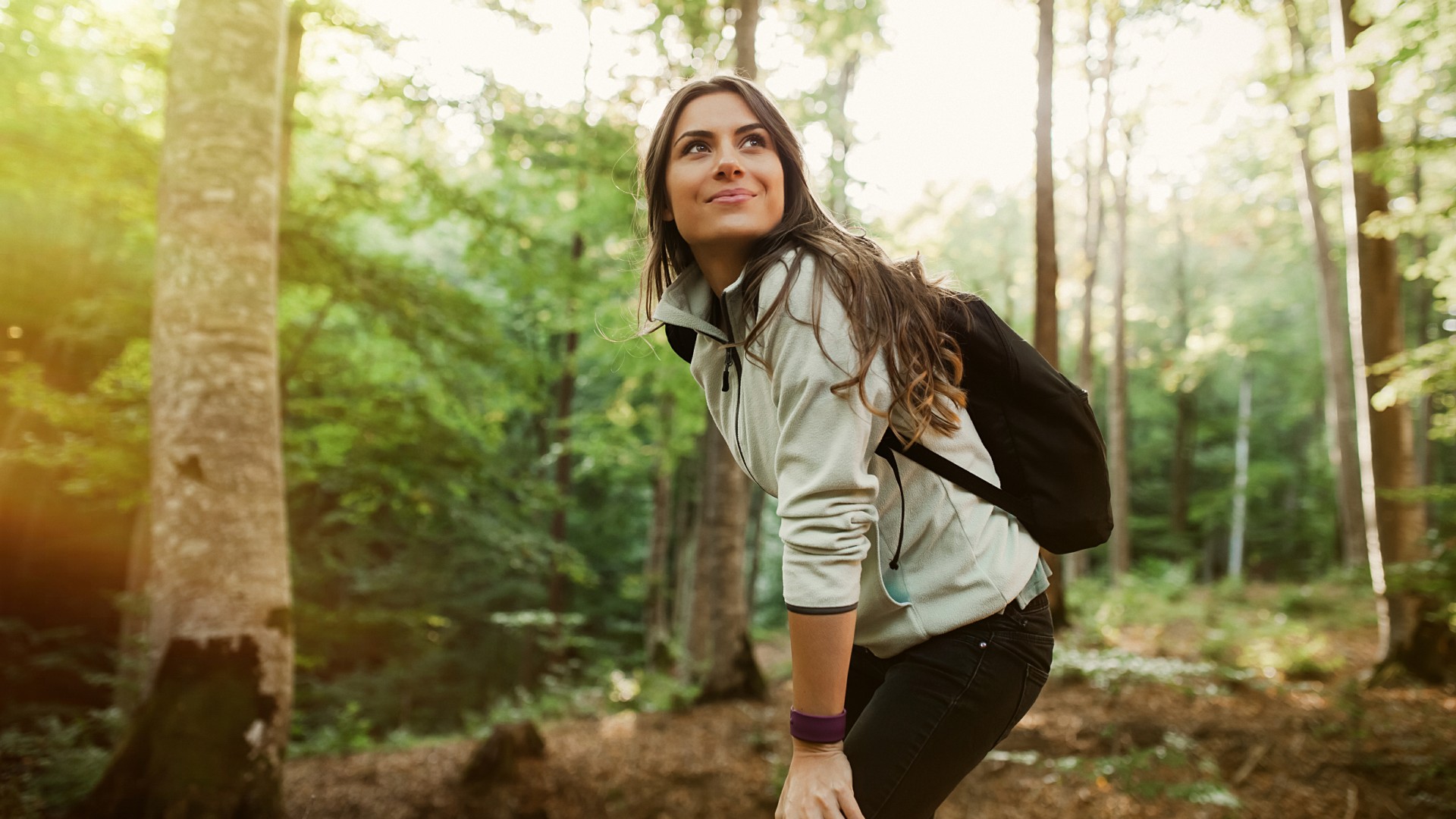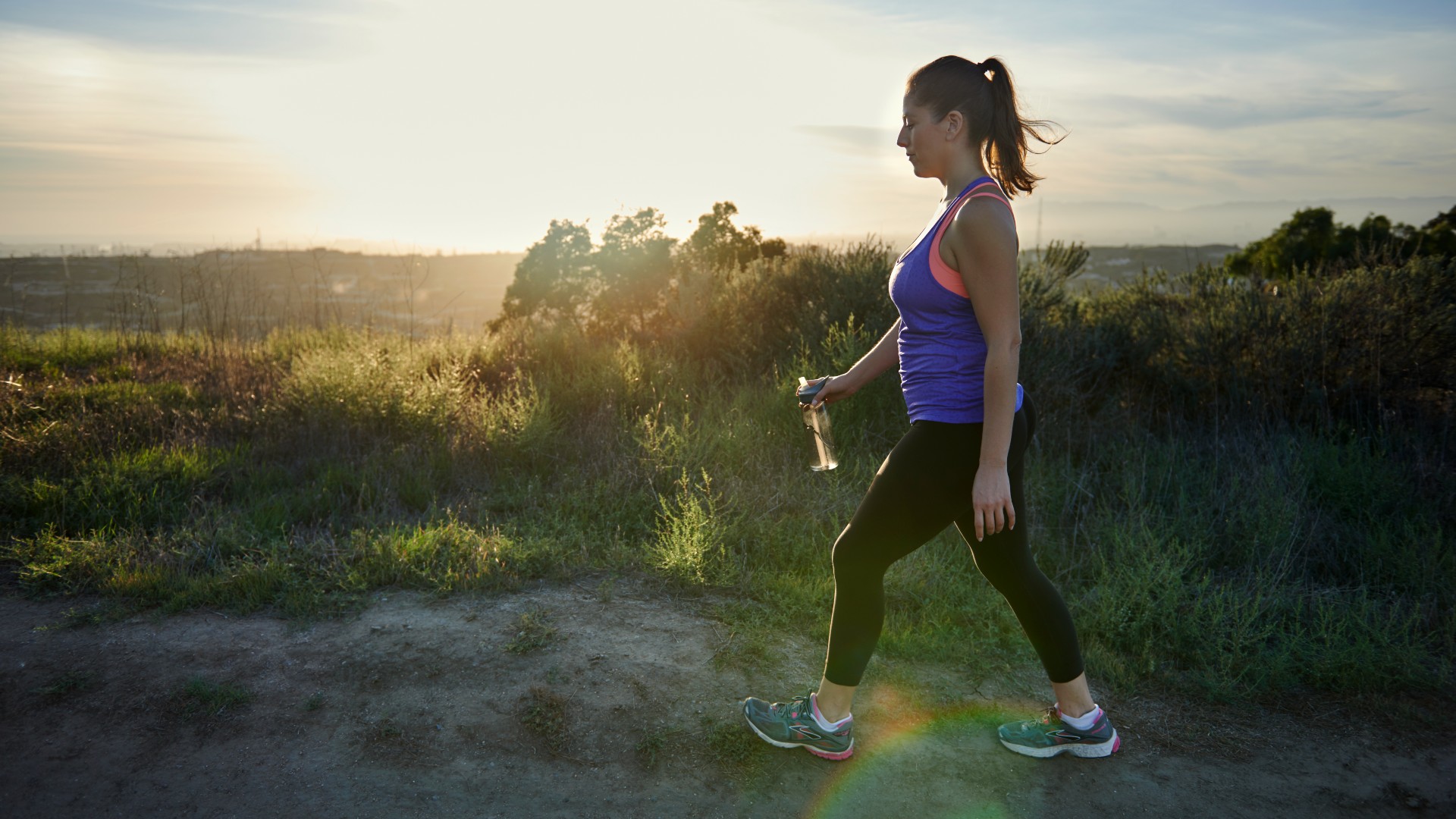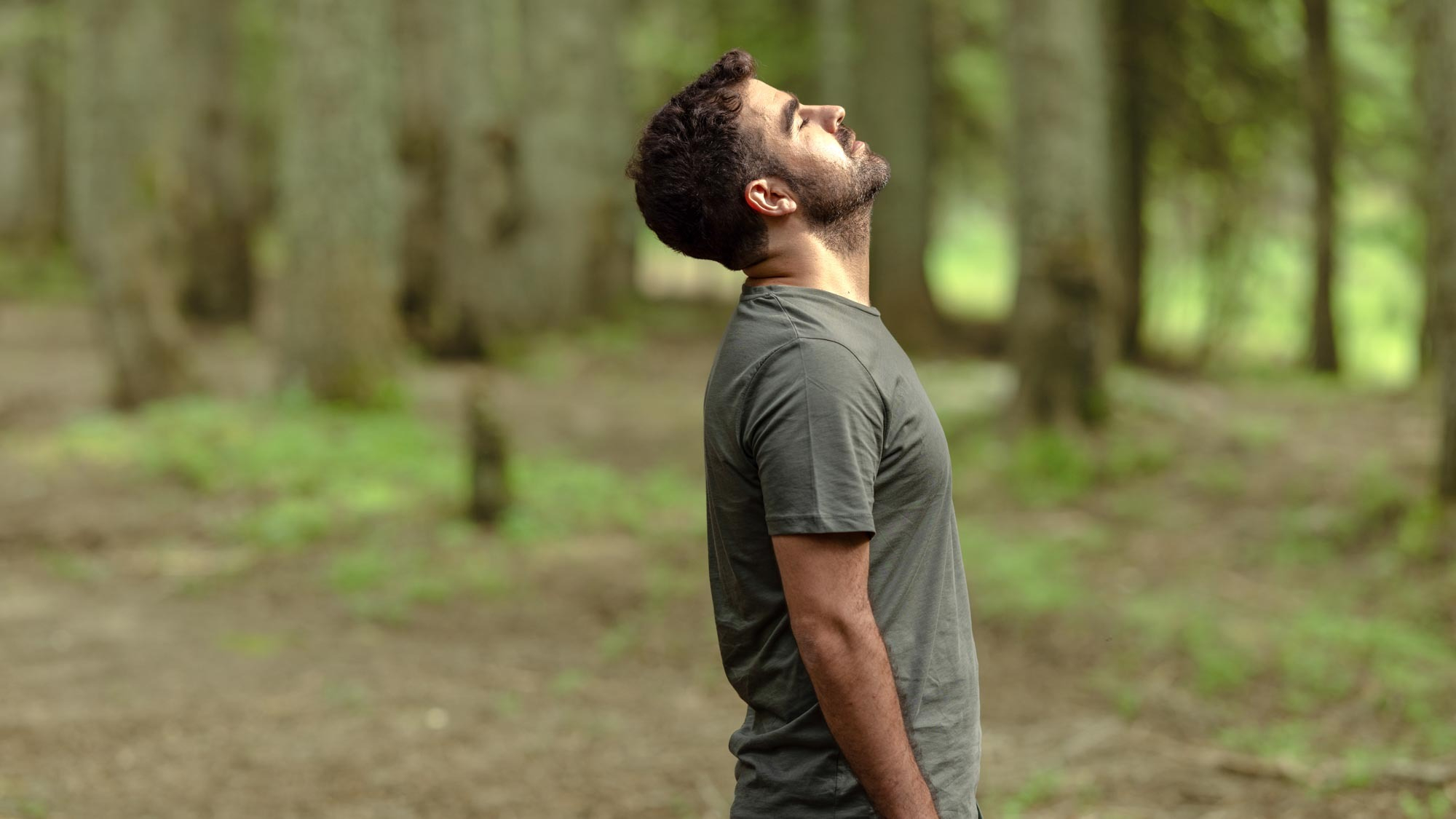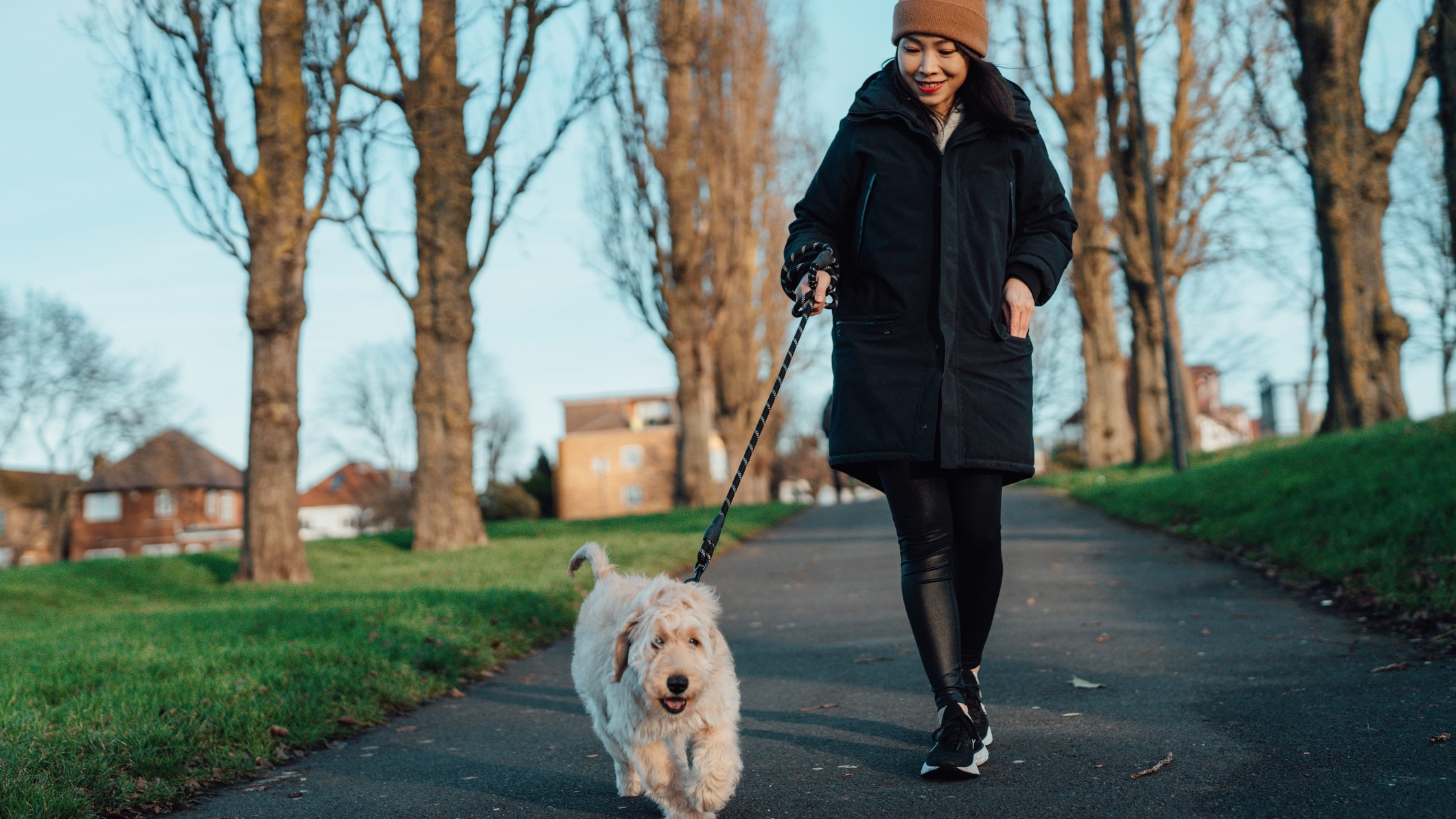
I don’t know about you, but nothing quite resets my brain like a long walk outdoors. It doesn’t have to be in nature, although it helps, but movement certainly helps me feel more mentally robust afterward, and even helps get the creative juices flowing if I’m stagnant at my desk for long periods.
If you, like me, prefer taking walks away from even the best treadmills and into the world, maybe you should try silent walking. The silent walk TikTok trend took off in a big way a while ago, so as usual, I’m late to the game. But I finally caved and took notice.
If you haven’t heard of it before, you won’t need three guesses to work out what the silent walking trend involves — simply go for a walk in silence without headphones, music, or podcasts to keep you company.
My first instinct was this: What has the world come to? We’ve been doing this for decades without a second thought, and now Gen Z is making it a thing.
But actually, when I really think about it, when was the last time you went for a completely silent walk? I’m talking no podcasts, no friends or family and no phone calls or distractions — just you, your body and thoughts.
With that in mind, I took 60 minutes daily to try silent walking and track how I felt after just one week. Here’s what I learned from the challenge.
What is silent walking?

As I mentioned, TikTok is largely responsible for putting a name to what we’ve already been doing for many years before smartphones came about: walking without noise or distraction.
Get instant access to breaking news, the hottest reviews, great deals and helpful tips.
That also means not using your phone — no doomscrolling or texting your friends! Consider it your temporary digital detox.
There are many benefits of walking. Movement throughout the day is free and accessible, boosts your metabolism by increasing your overall step count and helps you connect with nature and improve several components of fitness.
Consider it your temporary digital detox.
Physical benefits include better cardiovascular fitness and strengthening your muscles, bones, joints and ligaments. But there are many benefits for your mental health, too; these include reducing stress and anxiety, improving overall mood and increasing mental stamina.
The problem is that so many of us stay glued to our smartphones while we walk, which prevents us from being present and connected with our thoughts, feelings and surroundings.
I’m guilty of it — I’ve been on many early morning dog walks in beautiful settings and still found myself submerged in emails before 7 a.m.
Enough is enough. In a bid to increase mindfulness, I switched off my phone and did some silent walking. I learned three core lessons.
1. I appreciated the walk and my surroundings far more
It's hardly a shocking outcome.
With no distractions, I found walks even more enjoyable than usual. Whether I went to my local park or stuck to the roads, I noticed and appreciated my surroundings more.
After just a few days, I suddenly realized I'd slowed my pace (I’m known to be a very quick walker) and even stopped to look at shop windows or cute dogs along the way.
Each time, after getting home, I felt really grounded and present, like I’d had space to disconnect from the online world and reconnect with the physical one.
Sure, it didn’t last long — my work emails, social media and WhatsApp notifications soon crept back in — but at least I’d found an hour of solitude to re-root myself.
2. I felt more connected with my mind and body

On the subject of “connectedness,” what does that even mean? If you’ve ever followed a guided meditation or breathwork session, you’ll know from experience.
The feeling of being connected with your mind and body allows you to tune into sensations and emotions more easily. Am I stressed? Why is my jaw clenched? Am I hunching, and why?
I recently had some very personal experiences with grief, and because life surrounding the events had become so busy, I hadn’t really taken any time to sit with my thoughts.
I know 60 minutes a day doesn’t sound like much, but it helped me tap into how I’m physically and emotionally presenting myself, which I liked, surprisingly. The simple gift of having time to think about life is underrated.
It wasn't a guided meditation, but it wasn't far off. And it was more relaxing than walking yoga!
3. I felt calmer and happier afterward

It’s no surprise, then, that my third and final realization was that I felt calmer and subsequently happier after.
I tried to prioritize silent walking earlier in the day, which translated to better focus and less restlessness during my work day. It also meant I didn't put it off until the last minute.
As someone who is neurodiverse, I get very easily distracted and overstimulated. Silent walking helped take me out of fight-or-flight quicker, improving my ability to handle in-the-moment stress. I just felt less impulsive and more capable of handling myself after a long, quiet walk by myself.
I’m not saying it’s a cure-all — far from it. But daily mindfulness practices like silent walking, walking meditation, or more traditional forms of breathwork, yoga, or journaling are consistent practices that benefit you long-term. The idea is to build resilience over time, despite feeling calmer in the moment as well.
Verdict
Although I know I probably won’t stick to it every day — I’m far from perfect — I will try to incorporate silent walking more often. If you plan to try it, I recommend (from experience) finding a safe and relatively quiet place to walk.
I live in London, so I had to dig a little deeper to adhere to this, but it’s worth it.
I also did some digging before trying the silent walking challenge, and found others liked to set an intention before each walk. Mine was to focus on my breath, but yours could be anything you like.
Lastly, I didn’t feel comfortable or safe leaving my phone at home, so I switched it off and tucked it into my pocket. I recommend doing the same in case of emergencies.
Oh, and forget 10,000 steps or whatever you’ve been told to reach — just try to enjoy it!
More from Tom’s Guide
- Calisthenics coach says this is the 20-minute workout you need to build full-body strength and boost fitness
- Is walking backward good for you? We asked an expert
- I tried this 30-minute indoor walking workout — here's why it's perfect for the holidays

Sam Hopes is a level 3 qualified trainer, a level 2 Reiki practitioner and fitness editor at Tom's Guide. She is also currently undertaking her Yoga For Athletes training course.
Sam has written for various fitness brands and websites over the years and has experience across brands at Future, such as Live Science, Fit&Well, Coach, and T3.
Having coached at fitness studios like F45 and Virgin Active and personal trained, Sam now primarily teaches outdoor bootcamps, bodyweight, calisthenics and kettlebells.
She also coaches mobility and flexibility classes several times a week and believes that true strength comes from a holistic approach to training your body.
Sam has completed two mixed doubles Hyrox competitions in London and the Netherlands and finished her first doubles attempt in 1:11.
You must confirm your public display name before commenting
Please logout and then login again, you will then be prompted to enter your display name.










